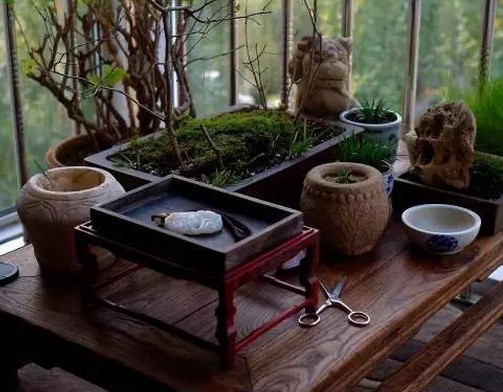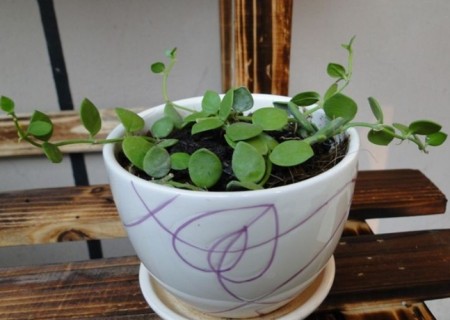How to remedy the rotting Root of Phalaenopsis
Every Spring Festival, Phalaenopsis will grow slender pedicels from the axils of the leaves, and then slowly bloom like butterflies, adding a lot of Spring Festival atmosphere to the festival, deeply loved by people and known as the "queen of orchids". The butterfly orchid is graceful and flies like a butterfly, hence its name, implying nobility and elegance. A Phalaenopsis usually grows two flower cores. When the flowers bloom, the petals are like crowded butterflies, bright and conspicuous, like a string of butterflies, very good-looking.

As a kind of ornamental potted flower, Phalaenopsis has beautiful shape, delicate and colorful flowers. But what if rotten roots are found during maintenance? The following editor talks about the treatment and prevention of the rotten roots of potted Phalaenopsis.
1. Why did Phalaenopsis rot
The direct reason for the rotting root of potted Phalaenopsis is the improper management of water and fertilizer. If too much watering, long-term accumulation of water in the basin, it will lead to rotten roots; if too much fertilizer, resulting in excessive accumulation of nutrients in the basin can not be absorbed, fertilizer damage will also cause rotten roots. Therefore, in order to avoid rotting roots, we must first do a good job in water and fertilizer management.
2. What about the rotten roots of Phalaenopsis?
1) remove the soil from the basin
When we find that the roots of Phalaenopsis planted in our home are rotten, we should first take the plant from the pot, clean up the soil attached to the plant roots, and then clean the plant roots.
2) pruning rotten roots
Then use sterilized scissors to cut off all the rotten roots and try to keep the intact parts, which may save the surviving roots.
3) Root disinfection
The residual roots will leave some wounds after pruning, which need to be disinfected so as not to infect the bacteria and induce rotting roots again. Soak the roots in potassium permanganate solution for a quarter of an hour and then set them aside to dry, then apply a layer of plant ash on the wound and you can put it back on the pot.
4) soil disinfection
We also need to disinfect the soil before putting it on the pot. You can use boiling water to irrigate the soil, then dry it, and then use it after cooling.
5) re-potting
After the preparatory work is done, we can pot the plant. When potting, the soil above the rhizome of the plant needs to be compacted, then watered once and placed in a cool place. Finally, covering the basin with a thin film, on the one hand, it can keep moisture, on the other hand, it can control the temperature, so that the plant can grow in an environment of about 20 ℃. New roots can be seen after about half a month, indicating that the plant has been successfully rescued.
3. How to prevent Phalaenopsis from rotting root
1) allocation of soil
Potted Phalaenopsis has high requirements for soil, and the selection of soil requires looseness, air permeability and strong water permeability. It is recommended to use peat + perlite or peat with pine needles. If there is moss, moss can be used alone as culture soil. Then apply some organic base fertilizer to the basin soil.
2) in terms of watering, the basin soil can always be kept moist, but avoid stagnant water in the basin, because as mentioned earlier, long-term stagnant water in the basin can easily lead to rotting roots. Watering should pay attention to observe the changes of the basin soil, if a small amount of water can not penetrate down, indicating that the basin soil is too tight or there is stagnant water in the basin. You can use a toothpick to determine whether there is stagnant water. If there is stagnant water, you need to stop watering, drain water from the bottom or change some dry soil. If there is no stagnant water, it should be the reason why the basin soil is too tight. At this time, we need to turn the basin and change the soil to avoid rotting roots.
Time: 2019-05-31 Click:
- Prev

Planting and Cultivation Techniques of Calamus calamus Bonsai
The ancients Zhang Tingjiao said that calamus has mountain forest gas, no rich gas. There is a clean shape, no dirty shape, clean air out of dust, spiritual opportunity between water and stone, this is a quiet product, this is a longevity product, players cherish
- Next

Culture method of Tripterygium wilfordii
String money vine, also known as button vine, button jade vine, million hearts, is a new foliage plant this year, because its name means auspicious, the leaves are thick and succulent, and the ornamental is excellent. If you want to bring a string of good luck to your family, learn how to raise it with Huahua! Tripterygium wilfordii can not only be planted in pots.
Related
- Fuxing push coffee new agricultural production and marketing class: lack of small-scale processing plants
- Jujube rice field leisure farm deep ploughing Yilan for five years to create a space for organic food and play
- Nongyu Farm-A trial of organic papaya for brave women with advanced technology
- Four points for attention in the prevention and control of diseases and insect pests of edible fungi
- How to add nutrient solution to Edible Fungi
- Is there any good way to control edible fungus mites?
- Open Inoculation Technology of Edible Fungi
- Is there any clever way to use fertilizer for edible fungus in winter?
- What agents are used to kill the pathogens of edible fungi in the mushroom shed?
- Rapid drying of Edible Fungi

